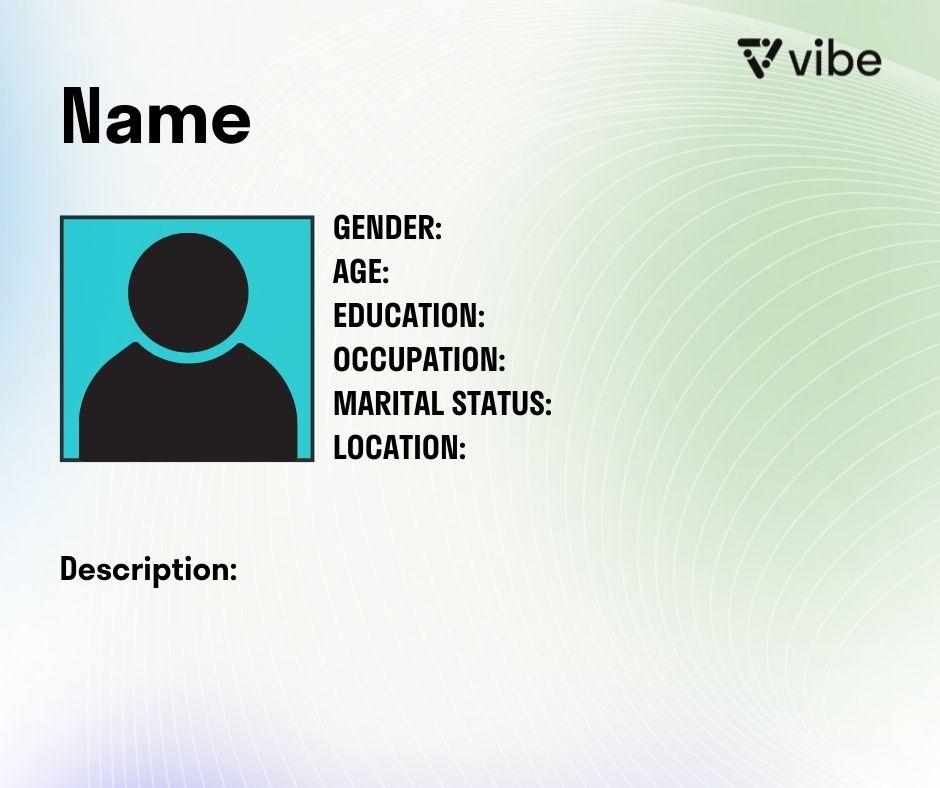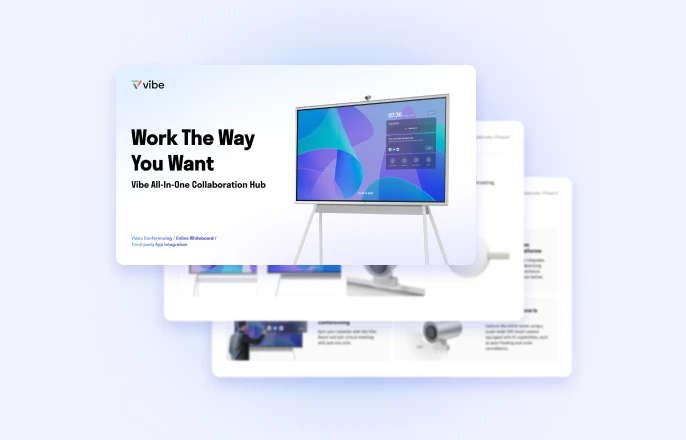Every aspect of your business is centered around two focal points: your customers and your product/service. Although you’re an authority when it comes to your product and service offerings, it can be challenging to identify who exactly is going to buy from you. That’s why it’s crucial to focus on your target market and learn how to create buyer personas.
In this blog, we’ll explore what a buyer persona is, why it’s important, and, notably—how to create one. Let’s get into it.
What Is a Buyer Persona?

A buyer or customer persona is a fictional character created to reflect your ideal target market. They typically take into account not only demographic data like location, income, and age, but also psychological information like motivations and interests in their purchasing decision.
A buyer persona is presented as a brief overview of this psychographic and demographic information, sometimes with a fake name and face to make it easier to remember the persona in your decision-making process.
Why Use a Buyer Persona

Creating buyer personas is a great way to assess the vision and goals of your products or services by better understanding your target customers and their needs.
Let’s take a look at some other benefits in detail:
-
Better understand buyer behavior. Learning how to create buyer personas helps you appreciate why your customers act a certain way. As a result, you’re better positioned to successfully promote your services or products to them.
-
Adapt your actions to the buyer’s needs. Once you determine who your customers are and their behavior, you can personalize all your marketing efforts accordingly.
-
Visualize the customer journey. A buyer persona will help you know how individuals move through the customer journey. From the awareness stage to conversion, you’ll be able to appreciate how and why customers proceed from one stage to the next.
-
Provide customers with a better experience. If you understand your customer’s behavior, you can provide them with a unique experience. Customers appreciate a personalized experience from companies, so you’ll be in a better position to keep them satisfied as you advance them through the customer journey.
Buyer Persona Example
Let’s look at an example of a buyer persona to get a better idea of what it looks like.
B2C Buyer Persona

The persona explains clearly that Peter favors a sales rep to patiently guide him through the available insurance plan options with no unduly promotional sales tactics. However, it’s not very clear who Peter is and what his goals are. Why is he trying to buy health insurance now? Is he a family person? What’s his background? This handy information can help sales reps appeal to Peter’s specific circumstances and offer more relevant content.
Creating Buyer Personas
Below are steps you can follow to create a buyer persona. Remember, it can take days or weeks to create one, depending on your resources.
1. Do Audience Research

To create effective buyer personas, you must thoroughly understand your customers’ behavior and what influences their buying decisions. Thus, research is vital to the buyer persona development process.
Customer behavioral analysis can help you come up with a comprehensive buyer persona profile that addresses the following questions:
-
What age group does your target customer fall in?
-
Where do they live?
-
Who do they live with?
-
How much do they earn?
-
What’s their disposable income?
-
What are their interests?
-
Which digital channels do they prefer?
-
Where do they shop?
2. Narrow Down Customer Details

After collecting data and answering all the relevant customer persona questions, you must analyze this information to develop a good understanding of your customers and subdivide them into separate buyer personas.
Rather than trying to reach a broad audience with your marketing efforts, segmenting your audience helps you tailor your message to the interests and needs of each target audience.
For instance, your products may attract customers from a broad age group. However, speaking to this diverse group with a generalized message may upset your younger customers or alienate the older ones.
Audience segmentation can even unearth segments that you previously were unaware of.
You can further segment your customer persona based on:
-
Pain points
-
Goals
-
Demographics
-
Interests
-
Fears
-
Objections
3. Create Separate Personas

Once you’ve narrowed down information about your customers, you need to organize this information into separate personas.
To do this, find people in your audience who share the same goals and challenges and group them into their own category.
For instance, if you’re a fitness coach, you might have customers who wish to lose weight and others who wish to increase muscle. These different categories will symbolize different personas.
4. Give Personas a Story

It’s time to create a narrative. Begin by assigning your buyer persona a name—this will help you establish a personal connection with them.
Do you already have a name in mind? Congratulations! Now start writing down other demographics such as location, profession, age, interests, and hobbies. This will go a long way in determining your customers’ preferences and the reasons behind these choices.
5. Build Your Marketing Strategy

Creating effective personas helps you improve your marketing strategy. For example, you can:
-
Create ad campaigns that are based on each persona’s preferred platform.
-
Optimize your website to speak to customer personas and in their language.
-
Create content that addresses specific challenges and pain points mentioned in your buyer personas.
-
Evaluate your existing content—does it target one or more of your buyer personas? If not, make some adjustments.
Buyer Persona Templates

A buyer persona template will outline all the information required to define every customer segment.
Using a template provides you with an excellent starting point. You’re unlikely to forget important information when you have a uniform checklist across your marketing teams. Any modification you make in this template will be visible to everyone. It’s a handy tool to have every time you initiate a campaign, saving time on identifying your target customer multiple times.
Tools to Help Build Buyer Personas

Developing new customer personas and updating the existing ones can be much easier when you have the appropriate tools.
For instance, as we mentioned, a tool like a persona template can guide you through the creation process and ensure you don’t miss out on essential details.
Taking customer personas a step further, empathy mapping is a handy tool for getting an in-depth understanding of your target customers. Like customer persona, empathy maps can be helpful in the following situations:
-
When developing more detailed buyer personas
-
When diving into customer segments
-
When defining your customer persona "story."
-
When capturing behaviors that may surface in your customer interviews
Another useful tool is Google Surveys. Take advantage of this tool when researching the desires and needs of your target audience.
A collaborative brainstorming tool is also a must-have for many marketing managers. Even if you’ll be the one leading the buyer persona creation process, it’s advisable to collaborate and ideate with your team members to get a complete picture of your semi-fictional customer.
Vibe Board Can Ease Your Buyer Persona Creation Process

Throughout the buyer persona creation process, it’s crucial to collaborate and interact with your leadership and creative team.
Vibe Board is an interactive whiteboard that supports real-time collaboration, so your team members can simultaneously work on the same buyer persona template. For example, via the embed feature, you can embed the buyer persona documents effortlessly. Also, it’s easy for team members to draw, write, iterate and refine the document the way they want. You can also use Vibe’s pre-built Empathy Map Template to get started right away.

Most importantly, you can map a customer journey in the Vibe Board through an illustration, infographic, diagram, or excel sheet. By visualizing the emotions, actions, and thoughts customers experience, you can get insightful information about their needs, pain points, and purchasing behavior.
Want to learn more about how you can create buyer personas using Vibe Board? Watch a demo here.
FAQs
What are 3 traits you think are important for a buyer persona?
-
Demographic Characteristics: Location, age, level of education, gender.
-
Social Characteristics: Income, family situation, occupation, interests.
-
Psychological Characteristics: Includes major character traits.
How long does it take to create a buyer persona?
One survey showed that small companies take between 22.5 and 72.5 staff hours to develop a buyer persona. On the other hand, large companies spend between 55 and 102.5 hours. However, you can create it within a shorter duration when using the tools mentioned in this post.
What should be included in a buyer persona?
A buyer persona includes specific, identifying information. This includes demographics such as gender, age, location, income level, disposable income, interests, etc.








-1sbltxxq4FYxHrXrwJVLsCDNsXpqNa.webp)
-5Zp0pmSytvcuYDVs1LvuwplKuRneK0.webp)
